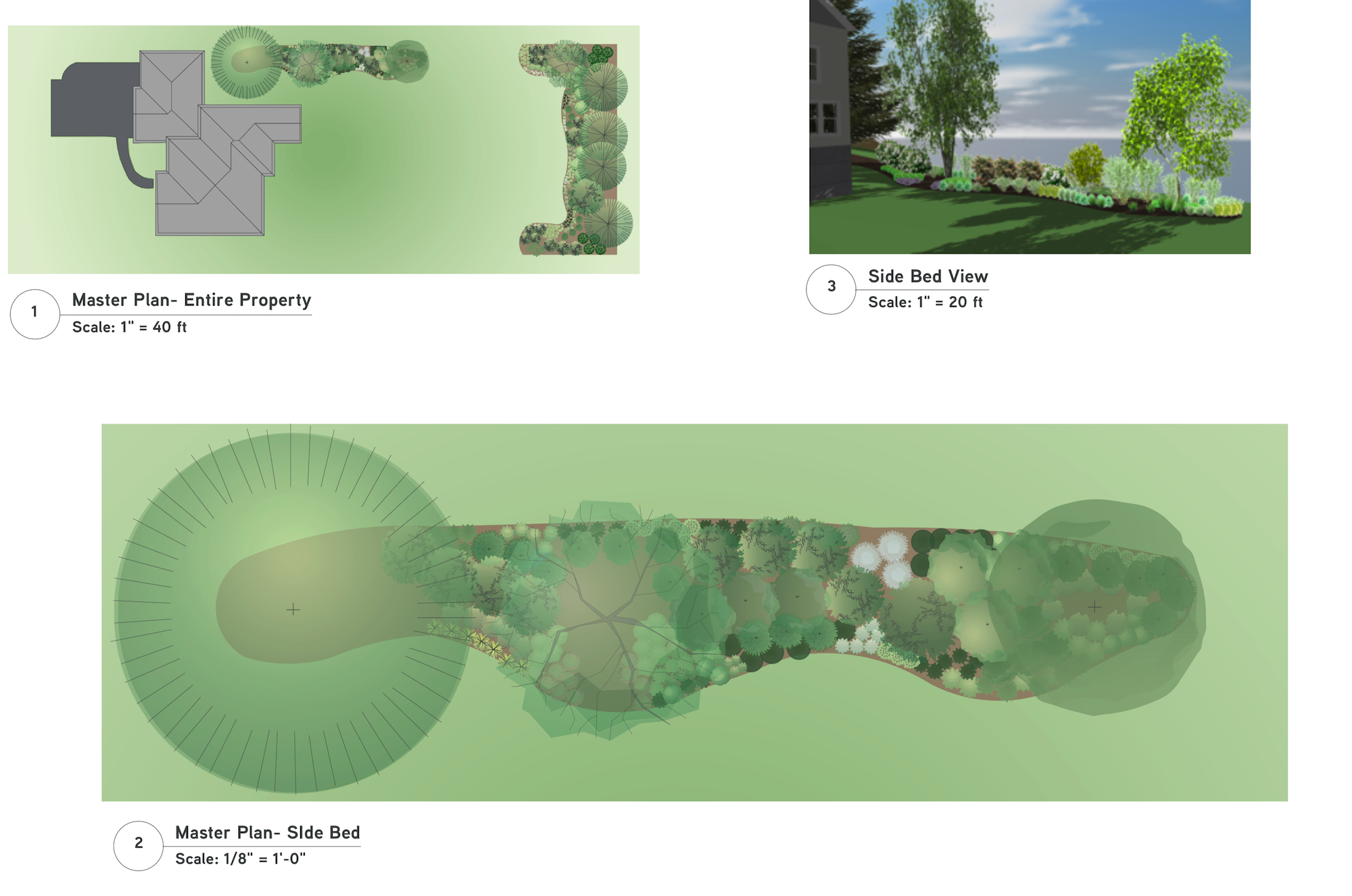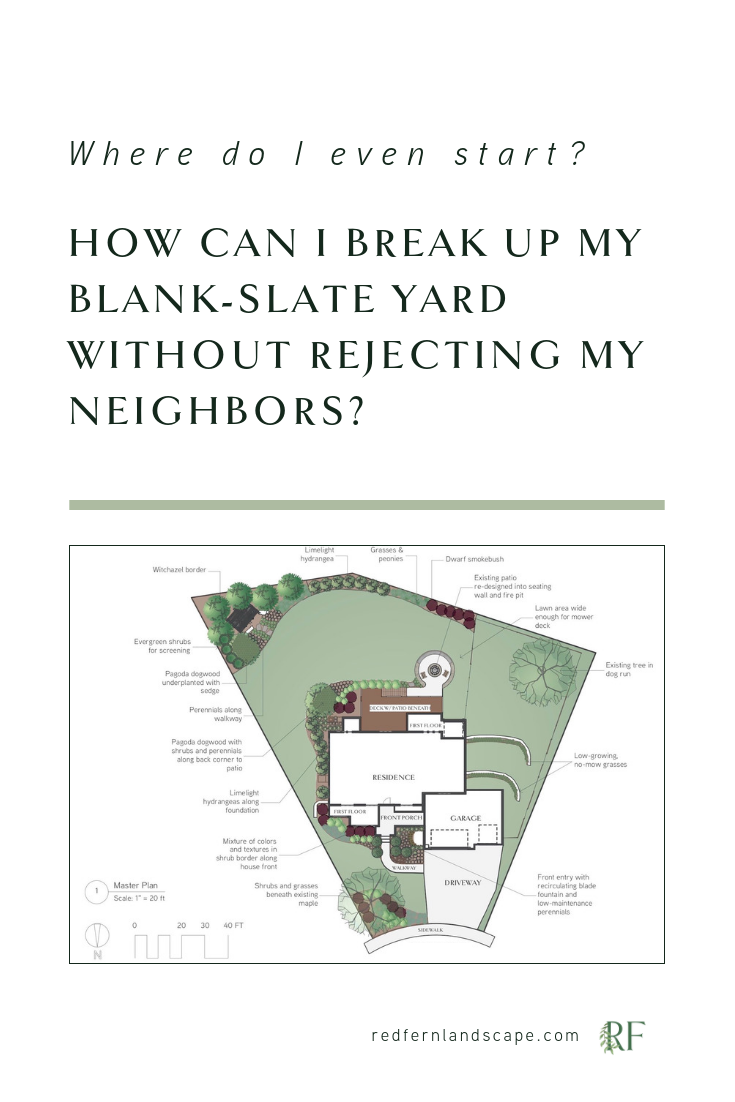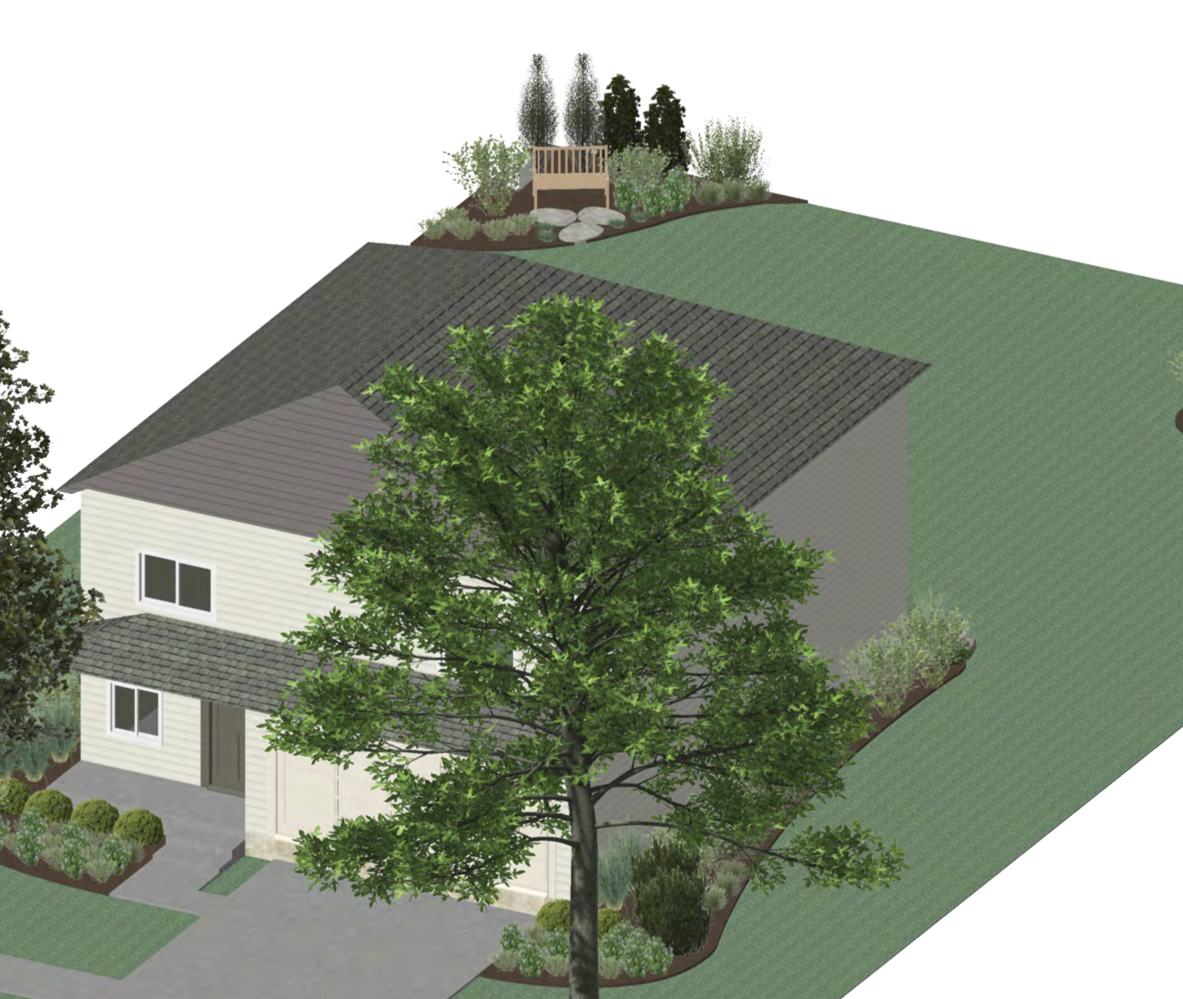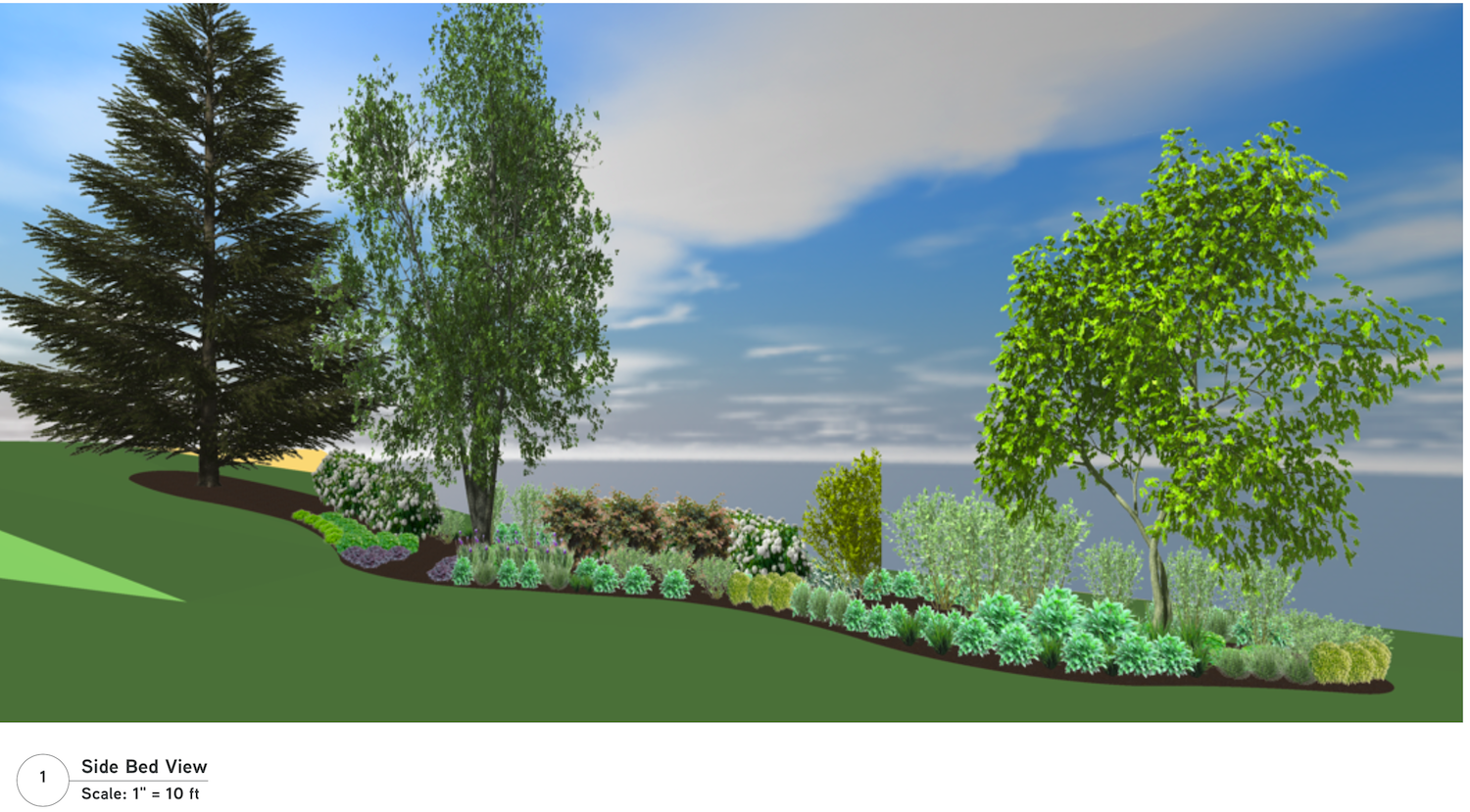
Here’s the thing about neighbors: you love them, but you need a little space – a little separation sometimes. With some yards, that can be hard because there’s nothing defining your yard as separate from your neighbors’ – many new construction homes have yards that are just a big open blank slate. Mowing leaves these obvious lines along your property line because nobody mows at exactly the same time. Raking leaves or any other kind of maintenance creates the same problems, because you’re following a property line that is actually invisible. It’s hard to know where your property starts or stops, and nobody’s bringing a string line out there to check.
Not only that, but your property is open and exposed – everyone can see everything. It’s a little weird to grill and eat on your patio while feeling like your neighbors can look right over your shoulder. Now, I love community and humans need each other, no question. You don’t need to create a fortress. We’re not talking about completely blacking every inch of the property line, carving out the entire space. (Unless you want to! We can make that look good too.) Today we’re talking about just setting some boundaries so that the yard makes more sense, and mowing and maintenance are easier to navigate. You may not want everyone in the neighborhood to see you on a Saturday morning drinking coffee in your robe while you read Better Homes and Gardens. The goal is to be neighborly and connected while also having some options for privacy.

Our precious neighbor at a former house had all the time in the world to mow, trim, and even clean up the clippings from our shared side yard. Meanwhile, we barely were able to mow once each week, and the line between our two yards was IMPOSSIBLE to miss- crisp and perfect on their side and mangy and overgrown on ours. We just had two different ways of handling our yards, and no buffer in between made it obvious.
So many neighborhoods in Iowa are built on old corn fields, and clients come to me with the blankest blank slate you can imagine to work with. What can you do with a big swath of green(ish) and nothing else? We’re not trying to completely turn our backs on our neighbors, but we’d like some definition in our yards.
How can you enjoy a bit of privacy, work with your property lines, and still have a welcoming connection with your neighbors?
What do we do when we don’t want a fortress but we do want some help defining our own outdoor spaces?
Enter the one-two punch of a screened seating area combined with island beds. The seating area could be the deck attached to your house, a pea gravel patio out in the back corner, or any other space you want to carve out that will get you outside without feeling like you’re under a microscope. Island beds aren’t connected to our houses – they serve to break up the boundaries of our yards and give everyone something better to look at than the mowed line between our yard and our neighbor’s.
Let’s start with the screened seating area. You need somewhere to gather outside- to sit, relax, and entertain that doesn’t feel like you’re on display. Maybe the builder added a deck or patio, but there’s nothing but grass around it. Maybe you’re starting from scratch and want a space separate from your house to sit and enjoy being outside. Here are some things to think about.
- Screen at human-scale height. You’re not going for a 3-story wall here, or ankle-high grasses. You want to stick with 3-6 foot tall screening. Screen on two or three sides so you’re mostly blocked while you’re seated but you don’t feel like you’re in a jail. Three of my favorite plants to use for screening that get to that 3-6 foot height quick enough without getting humongous are:1) hydrangeas (especially Limelight)
2) ‘Sea Green’ juniper (not all junipers stay low, so check)
3) switchgrass (I’m partial to ‘Prairie Sky’) - Make sure there’s something protecting your back. You can go higher on one side of the patio or seating area so that you feel safe. Our instinct (possibly enhanced by watching too many action movies) is to avoid being out in the open, and to have something “covering our six” (that’s a little Smokey and the Bandit reference for you.) Try a lattice with vines on one side of a patio – it’s somewhat open but still gives protection.
- Make sure the seating area is sized for what you need. Think about what you’ll be doing out there – if you have a deck large enough for a table, maybe you need only a couple of chairs or a bench. If you want to gather with a lot of people, be sure to create enough space for it. Check out our blog post on sizing a patio to help decide how much space you’ll need.

Once you have a nice place to be outdoors, you need to handle those edges – the boundaries of your yard. Right now they bleed into everyone else’s. Be careful of setbacks that your neighborhood or city might have- it’s okay to create the bed off the actual property line a bit so that you’re not too close to the edge. You don’t want to end up causing more work for your neighbors in the long run.
- Fill the corners. An easy way to break up the yard’s edges without creating Fort Knox is to add in planting beds at the corners. You can go high in the back center and then step lower on the sides. This helps define the yard without needing to invest in a fence. An easy combination is a cone-shaped evergreen like a Holmstrup arborvitae flanked by some rounded shrubs like Little Devil ninebark, with lady’s mantle or geranium across the front. You’re making something similar to the “thriller, filler, spiller” concept we use for containers. (Read more about THAT in our blog post here.)
- Use GOOD plants. Choosing your plant material carefully is important. Check the tags and read up on the plants. Evergreens never really stop growing, so a spruce from the nursery that is 6 feet tall now may become 40 feet tall before your younger kids graduate high school. That may be WAY too big for an island bed. (Maybe it isn’t… it depends on the size of your yard!) You don’t have to stick with evergreens. Try grasses or deciduous shrubs as the backdrop, and use evergreens up front for color throughout the year.
- Break up a long expanse with an island bed. These can be various sizes, depending on how long you’re working with. If the corners are filled, sometimes just one bed set near your property line, at about the center will be enough. I like to create the backbone and then layer in front. These beds can be narrow, but some layering helps it not feel like a pencil line. The length and width of the bed needs to be proportional to the size of the yard space – a 20-foot long property line might only need a 5-foot long island bed, but a 150-foot property line might need either a couple of them OR something more like 15-foot long.

I work with many homeowners that are starting with a blank slate – a wide open yard surrounded by neighboring houses with wide open yards. While we LOVE our neighbors, we often want just a little separation or definition for our own spaces. As you gaze across the backyard and possibly right into the neighbor’s kitchen, consider adding something to your yard that breaks up your view a little, gives THEM something nice to look at, and gives you just a bit of privacy.
How do you feel about a little bit of screening? What would you add to your yard to break it up from your neighbors’ just a little?


[…] Quote from the source: … […]
LIke it
pin it
tweet it
email it